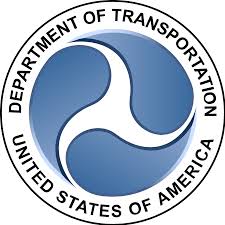
The first part of the document reiterates the agency’s reason for moving towards a registration system, citing recent safety concerns and emphasizing the need for enforcement of safety regulations:
“Pilot reports of UAS sightings in 2015 are double the rate of 2014. Pilots have reported seeing drones at altitudes up to 10,000 feet, or as close as half-a-mile from the approach end of a runway. In recent weeks, the presence of multiple UAS in the vicinity of wild fires in the western part of the country prompted firefighters to ground their aircraft on several occasions…
…we must create a culture of accountability and responsibility among all UAS operators. To maintain safety in the NAS, the Department has reconsidered its past practice of exercising discretion with respect to requiring UAS to be registered, consistent with statutory requirements of 49 U.S.C. 44101-44103, and has determined that registration of all UAS is necessary to enforce personal accountability while operating an aircraft in our skies.”
The report then goes on to state that in addition to a system of registration, markings and ID on every drone “will assist the Department in identifying owners of UAS that are operated in an unsafe manner, so we may continue to educate these users, and when appropriate, take enforcement action.”
After outlining the agency’s actions in convening a task force, the report requests comments from the public on 10 questions, including at what point registration should occur; what means are available for ID of individual products; who should be responsible for the submission of registration information; and whether or not a fee should be included. With a nod to complaints from the drone industry that excessive regulation is damaging potential growth in the sector, the DOT requests input on how a registration process could minimize the burden on manufacturers and encourage growth and innovation in the industry. The final question in the report asks a big question: “Are there additional means beyond aircraft registration to encourage accountability and responsible use of UAS?”
Although the department has made efforts to appear collaborative, the short time frame would seem to preclude significant input from outside the small task force. Public comments are requested to be submitted within 15 days of the document publication, and the convened task force is expected to present recommendations by November 20.

Miriam McNabb is the Editor-in-Chief of DRONELIFE and CEO of JobForDrones, a professional drone services marketplace, and a fascinated observer of the emerging drone industry and the regulatory environment for drones. Miriam has penned over 3,000 articles focused on the commercial drone space and is an international speaker and recognized figure in the industry. Miriam has a degree from the University of Chicago and over 20 years of experience in high tech sales and marketing for new technologies.
For drone industry consulting or writing, Email Miriam.
TWITTER:@spaldingbarker
Subscribe to DroneLife here.